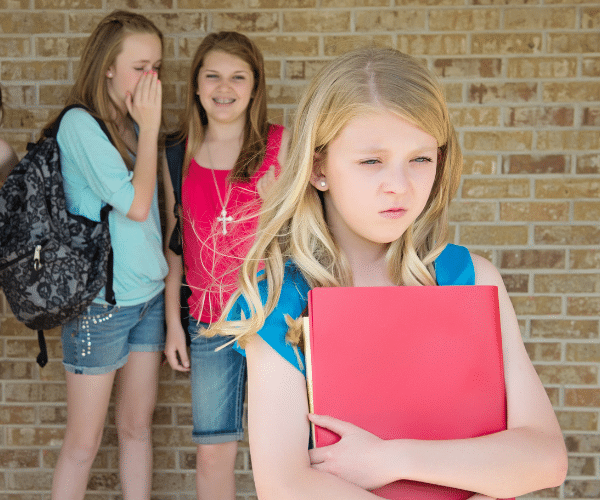September 24, 2024 6 min read

Best Practices in K-12 Bullying Prevention: The Role of a Positive School Culture
Industry:
Solution:

Bullying prevention in K-12 schools requires a comprehensive approach that addresses both the visible and hidden aspects of bullying behaviors. Jennifer Underwood, Ph.D., M.S.W., founder of Seven Two Consulting, recently presented a webinar in collaboration with Vector Solutions, outlining key strategies that can help schools create a culture where bullying is less likely to thrive. Below is a summary of the best practices and recommendations shared during the webinar.
Understanding Bullying: Beyond the Surface
Bullying is a complex and relational issue, often compared to a bamboo forest. While we may address individual bullying incidents (the bamboo shoots), the root cause—school culture—remains unseen and can allow bullying to continue popping up in new forms. To create long-term prevention, schools must address the deeper cultural factors that enable bullying.
Dr. Underwood emphasizes using the CDC’s broad definition of bullying, which focuses on aggressive behaviors likely to cause harm. This harm could be physical, relational, reputational, or emotional, and it’s important to recognize all types, as they can have serious long-term impacts.
CDC defines bullying as “any unwanted aggressive behavior(s) by another youth or group of youths, who are not siblings or current dating partners, that involves an observed or perceived power imbalance, and is repeated multiple times or is highly likely to be repeated.”
The Four Types of Bullying
Understanding the different forms of bullying is key to addressing them:
1. Physical Bullying: This involves physically hurting someone or damaging their belongings.
2. Verbal Bullying: Includes mean or hurtful things said or written, either in person or online.
3. Relational/Social Bullying: Aimed at damaging someone’s reputation or relationships, often overlooked but highly damaging.
4. Sexual Bullying: Using sexual words, gestures, or actions to hurt someone. Sexual bullying can escalate into harassment or assault if not addressed early.
Where and When Bullying Happens
Bullying can occur anywhere, but some locations are more prone to incidents, such as hallways, restrooms, playgrounds, and areas with little adult supervision. Online spaces, particularly social media, are also prime areas for bullying to flourish due to the lack of oversight and the ease with which harmful behaviors can spread.
While schools can’t control what happens outside their boundaries, understanding the community context—whether bullying occurs in neighborhoods, sports teams, or online—can help schools address the spillover effects that affect students during school hours.
At-Risk Students and Behaviors
Certain groups of students are more vulnerable to being bullied, including:
- LGBTQIA+ students
- Students with disabilities
- Overweight or underweight students
- Students who appear different from their peers due to race, ethnicity, or other visible characteristics
On the flip side, students who are more likely to engage in bullying tend to be those who socialize with peers who bully, those who view violence positively, and those experiencing stress or conflict at home. Understanding the relational and contextual nature of bullying can help educators tailor interventions for both victims and perpetrators.
Leveraging Relationships to Prevent Bullying
Dr. Underwood highlights the relational aspect of bullying, where peer dynamics either encourage or discourage bullying behaviors. Positive relationships—whether between peers, students, and teachers, or students and administrators—can prevent bullying by providing support for victims and discouraging perpetrators from continuing harmful actions. Schools should foster an inclusive, supportive community where bullying cannot thrive.
The Role of School Culture in Bullying Prevention
A school’s culture plays a critical role in either allowing bullying to take root or preventing it. Dr. Underwood outlines seven key cultural factors that schools can assess to identify areas for improvement:
1. Safety vs. Harm: Prioritize student safety by establishing clear policies and responses to bullying.
2. Respect vs. Disregard: Encourage respect for all students, especially those who differ from the majority.
3. Inclusion vs. Exclusion: Foster an inclusive environment where every student feels they belong.
4. Trust vs. Suspicion: Build trust with students and families through clear, honest communication.
5. Communication vs. Secrecy: Maintain open lines of communication between students, staff, and families.
6. Empathy vs. Depersonalization: Encourage empathy by connecting with students who feel isolated.
7. Connection vs. Isolation: Promote strong peer and teacher-student relationships to mitigate the isolation that often leads to bullying.
Trauma-Sensitive Approaches to Bullying Prevention
Since bullying is both a form of trauma and often linked to other traumas in a student’s life, schools should adopt trauma-sensitive approaches. These approaches focus on treating all students with dignity and respect, recognizing that anyone involved in bullying—whether as a victim or perpetrator—may have experienced trauma. Addressing these issues with care can lead to more effective prevention and intervention strategies.
Effective Prevention Strategies
1. Establish Effective Bullying Prevention Policies: Policies should be holistic, clearly define what bullying is in your school, set behavior expectations, and clearly outline consequences.
2. Supervision and Safety: Increase supervision in known bullying hotspots like hallways and playgrounds.
3. Early Intervention: Address rude and mean behaviors before they escalate into patterns of bullying.
4. Inclusion of Vulnerable Groups: Pay particular attention to language and behavior that targets specific groups, such as LGBTQIA+ or disabled students.
5. Family and Community Engagement: Involve families in promoting school values of respect and inclusion, reinforcing these values both at school and at home.
Building Empathy and Connection
Teachers and staff should focus on building connections with students, especially those who appear isolated or vulnerable. Encouraging these students to participate in school activities can reduce their risk of being bullied. Additionally, by fostering a culture of respect, trust, and inclusion, schools can prevent bullying behaviors from escalating.
Supporting Students
It’s important to recognize that students who are being bullied have experienced harm and to work collaboratively with the student and their family to create a plan where they feel safe and supported. When working with students engaging in bullying, approach each situation individually to understand and address the root causes of the behavior, give appropriate consequences based in accountability and behavior change, and involve the student’s adult caregivers. Students who witness bullying can also be impacted by the behavior so it’s important to assess how they are feeling and provide support. Talking to students about the importance of bystander intervention can help engage them in being part of the solution in the future.
Conclusion
Preventing bullying in K-12 schools is a complex task, but with a focus on school culture, relationships, and trauma-sensitive strategies, it is possible to create an environment where bullying cannot thrive. By implementing these best practices, schools can foster a safer, more inclusive community for all students.
How Vector Solutions Can Help
Educator and Staff Training:
Online training courses help educators and staff recognize and respond to bullying and other student mental health and well-being needs to create a more positive culture. Courses include:
- Workplace Bullying: Awareness & Prevention
- Bullying: Recognition & Response
- Responding to Bullying (Teachers & Staff)
- Cyberbullying
- Bullying and Students with Special Needs
- Hazing Prevention in K12 Environments
- Student Mental Health: Awareness, Intervention and Referral
- Youth Suicide: Awareness, Prevention and Postvention
Student Safety & Wellness Courses:
We also support student safety and well-being with our online courses for middle and high school students. Each course includes multiple 5-7 minute video-based modules featuring diverse peer presenters, and are available in 20 languages to help meet the needs of all students. Courses include lesson plans, assessments, and pre- and post-course surveys that help you measure students’ attitudes, beliefs and behaviors around these topics both before and after taking the courses. Courses include:
- Healthy Relationships: Bullying, Cyberbullying, Digital Citizenship, Sexual Harassment
- Mental Health & Well-Being: Stress, Anxiety, and Youth Suicide Risk
- Substance Misuse Prevention: Alcohol, Drugs, and Vaping
- Personal & Community Safety: Trauma, Hazing, and Active Assailant
- Career Readiness & Life Skills (9-12): Decision-Making, Empathy, Communication
References
Vector Solutions Webinar: Best Practices in K-12 Bullying Prevention: The Role of a Positive School Culture, presented by Dr. Jennifer Underwood.
Centers for Disease Control and Prevention. (March 12, 2024). Youth violence prevention: About bullying. https://www.cdc.gov/youth-violence/about/about-bullying.html
Stopbullying.gov. (2021). Effects of bullying. https://www.stopbullying.gov/bullying/effects
Stopbullying.gov. (2021). Who is at risk. https://www.stopbullying.gov/bullying/at-risk







